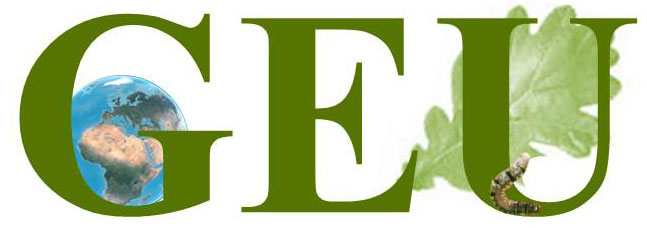
- Specific leaf area (SLA), and dry mass-based concentrations of leaf nitrogen (Nm) and phosphorus (Pm) are used in this study to better capture the response of the land surface component of the Earth System to environmental change. Image: Butler, E.E., et al. 2017. Proceedings of the National Academy of Sciences
Our ability to understand and predict the response of ecosystems to a changing environment depends on quantifying vegetation functional diversity. However, representing this diversity at the global scale is challenging. Typically, in Earth Systems Models, characterization of plant diversity has been limited to grouping related species into Plant Functional Types (PFTs), with all trait variation in a PFT collapsed into a single mean value that is applied globally.
In a new study in the journal Proceedings of the National Academy of Sciences authors created fine-grained global maps of plant trait distributions that can be applied to Earth System Models by using the largest global plant trait database and state of the art Bayesian modeling. “Here, we use an updated version of the largest global database of plant traits coupled with modern Bayesian spatial statistical modeling techniques to capture local and global variability in plant traits. This combination allows the representation of trait variation both within pixels on a gridded land surface as well as across global environmental gradients”, said Dr. Butler from Department of Forest Resources, University of Minnesota.
Focusing on a set of plant traits closely coupled to photosynthesis and foliar respiration – specific leaf area (SLA), and dry mass-based concentrations of leaf nitrogen (Nm) and phosphorus (Pm), authors characterize how traits vary within and among over 50,000 ~ 50 × 50 km cells across the entire vegetated land surface. “The importance of these traits (SLA, Nm, Pm) and the more advanced representation of functional diversity developed here may be used to better capture the response of the land surface component of the Earth System to environmental change”, said Prof. Josep Peñuelas from CREAF-CSIC Barcelona.
This endeavor advances prior trait mapping by generating global maps that preserve variability across scales by using modern Bayesian spatial statistical modeling in combination with a database over three times larger than previous analyses. “Our maps reveal that the most diverse grid cells possess trait variability close to the range of global PFT means”, said Dr. Butler from Department of Forest Resources, University of Minnesota.
Journal Reference: Butler, E.E., Datta, A., Flores-Moreno, H., Chen, M., Wythers, K.R., Fazayeli, F., Banerjee, A., Atkin, O.K., Kattge, J., Amiaud, B., Blonder, B., Boenisch, G., Bond-Lamberty, B., Brown, K.A., Byun, C., Campetella, G., Cerabolini, B.E.L., Cornelissen, J.H.C., Craine, J.M., Craven, D., de Vries, F.T., Díaz, S., Domingues, T., Forey, E., Gonzalez, A., Gross, N., Han, W., Hattingh, W.N., Hickler, T., Jansen, S., Kramer, K., Kraft, N.J.B., Kurokawa, H., Laughlin, D.C., Meir, P., Minden, V., Niinemets, Ü., Onoda, Y., Peñuelas, J., Read, Q., Valladares Ros, F., Sack, L., Schamp, B., Soudzilovskaia, N.A., Spasojevic, M.J., Sosinski, E., Thornton, P., van Bodegom, P.M., Williams, M., Wirth, C., Reich, P.B.. 2017. Mapping local and global variability in plant trait distributions. Proceedings of the National Academy of Sciences.


